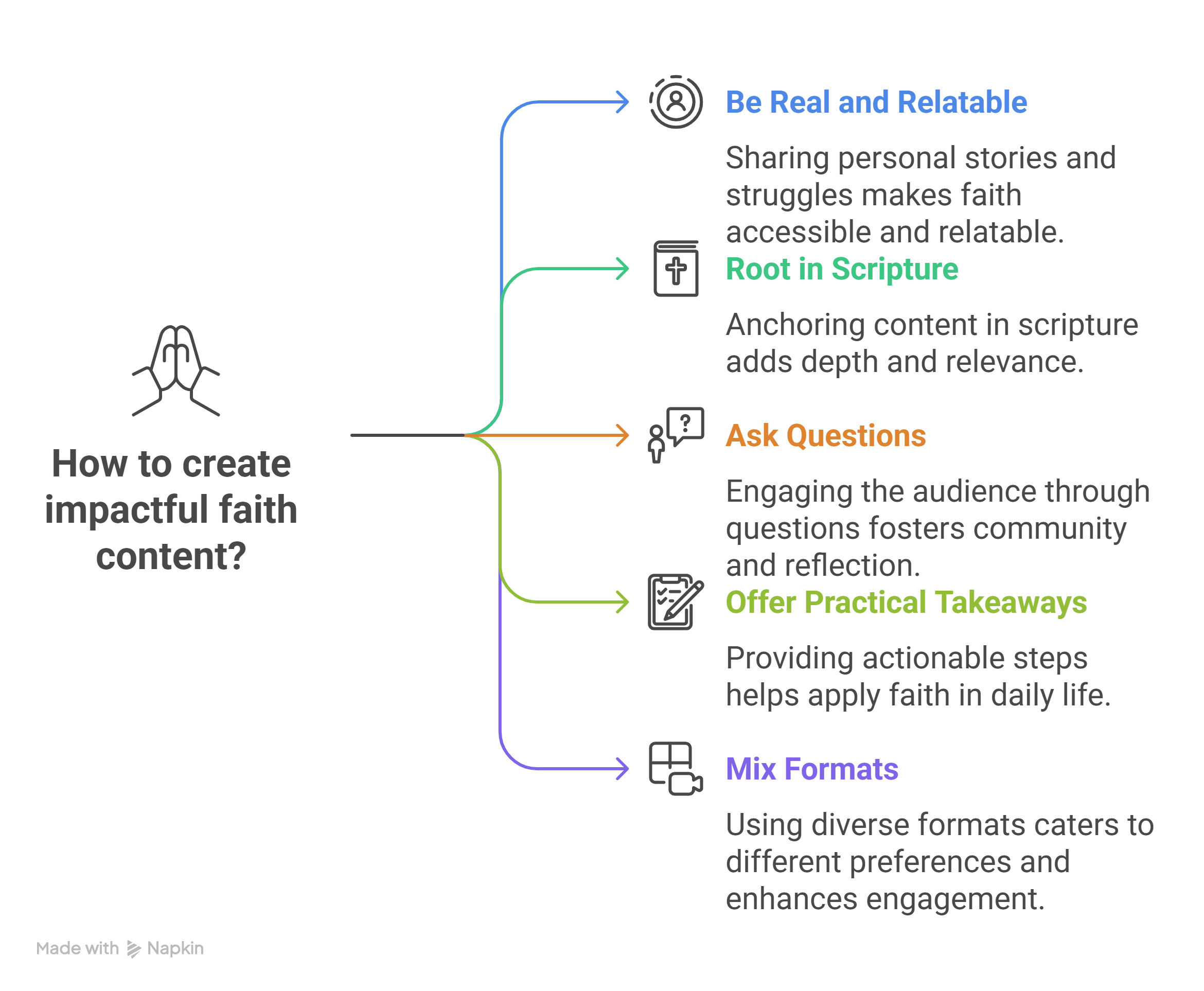Speak Faith Online, Content That Moves Hearts and Minds
Scrolling through our feeds, it’s easy to feel like everything blends together: news updates, funny memes, endless opinions. In the middle of all that noise, how can words of faith truly stand out? More importantly, how can we share God’s love online in a way that doesn’t just pass by in a second, but actually lingers in someone’s heart and sparks a change in their life?
That’s what “speaking faith online” is all about. It’s not just posting verses or inspirational quotes. It’s about creating content that invites people into a deeper journey, where faith feels personal, relatable, and alive.
Why Just Posting Isn’t Enough
We’ve all seen it: a quick “like” on a Bible verse graphic or a short comment like “Amen.” Those are encouraging, but if that’s where it ends, we might be missing something. Faith online should go beyond inspiration. It should lead to reflection, conversation, and transformation.
People don’t just need another post to scroll past. They’re craving something real; hope they can hold on to, encouragement that feels personal, and reminders that God is present in their everyday lives.
What Makes Faith Content Truly Impactful?
Here are a few simple truths to keep in mind when creating content that connects:
Be Real and Relatable
People are drawn to honesty more than polished perfection. When you share your personal journey, your doubts, prayers, and even the small victories, you invite others to see that faith is lived out in real, everyday life. A testimony about how God met you in a struggle often speaks louder than a perfectly designed post, because it shows that His grace is accessible to everyone.
Keep it Rooted in Scripture
While personal stories are powerful, they become even more meaningful when anchored in God’s Word. A simple verse paired with a short reflection or testimony can breathe life into familiar passages, making them relevant to today’s struggles and joys. This balance between story and Scripture helps your audience see that the Bible isn’t distant, it’s alive and still speaking to their situation right now.
Ask Questions, Not Just Share Answers
Instead of only giving solutions, invite your audience into dialogue. Questions like “What’s one thing you’re trusting God with this week?” or “Where have you seen His hand in your day today?” open the door for reflection and participation. This kind of interaction turns your content from a one-way broadcast into a shared space where people feel seen, heard, and encouraged to grow in community.
Offer Practical Takeaways
Faith isn’t just about inspiration, it’s about action. When you give your audience small, practical steps like how to pray when they’re anxious, how to extend kindness in daily interactions, or how to incorporate gratitude into their routine, you help them apply God’s truth in tangible ways. These takeaways show that faith is not only spiritual but also deeply practical, guiding decisions and shaping daily habits.
Mix Up Your Formats
Not everyone connects with content in the same way, so variety is key. Some people engage best with written reflections, while others are moved by videos, music, or visual storytelling. A short reel of encouragement, an audio prayer, or a well-designed Scripture graphic can each touch different hearts, ensuring that your message of faith meets people right where they are.
Real-Life Examples and Statistics
A study titled The Religious Facebook Experience: Uses and Gratifications of Faith-Based Content found that people who use Facebook frequently for faith purposes (liking, sharing, commenting, posting) are much more likely to minister to others and seek spiritual growth.
Also, 31% of people who attend a weekly religious service reported sharing their faith online. Among those who attend rarely, that number dropped to about 8%.
A survey published in the International Journal of Social Sciences and Humanities Reviews reported that 85% of Christians in Southeast Nigeria had high to very high exposure to faith-based social media handles.
90% used them for prayer meetings
82% used them to give offerings or tithes
96% used them to find information about church programs
Faith content isn’t just passive. People are using it for worship, giving, and staying connected with their church.
During the pandemic, members of a young adult online Buddhist community in Malaysia used social media heavily as their main source for teachings, communication, and spiritual practice.
Engagement behaviors like “like,” “share,” and “comment” were driven by emotional connection, sense of belonging, moral obligation, trust, and identity. The full findings are published in the Journal of Religion, Media and Digital Culture.
From Content to Community
Faith doesn’t stop at likes or shares. The real goal is building connections. Every post is a seed, but when nurtured, those seeds grow into prayer circles, Bible studies, or supportive friendships, even if they all started online.
Think of your content as an open door. Each story, verse, or reflection is an invitation: Come in. You’re welcome here. Let’s walk this journey of faith together.
Key Things to Keep in Mind
Authenticity always wins: Real stories and vulnerable moments connect more than perfect production.
Consistency builds trust: When you show up regularly, people come to expect and look forward to your words.
Interaction beats broadcasting: Posts that invite engagement have deeper effect than those that only push content.
Measure what matters: Look beyond likes and shares. Pay attention to comments, messages, testimonies, and people joining groups.
Speaking faith online is powerful because it allows us to meet people right where they are, on their phones, in their busy days, sometimes in their quiet struggles. Every post, every video, every prayer shared can be the reminder someone needs: You’re not alone. God sees you. Hope is alive.
So next time you share online, ask yourself: Will this just fill space, or will it plant a seed?
Your words might just be the spark that moves a heart closer to God.




